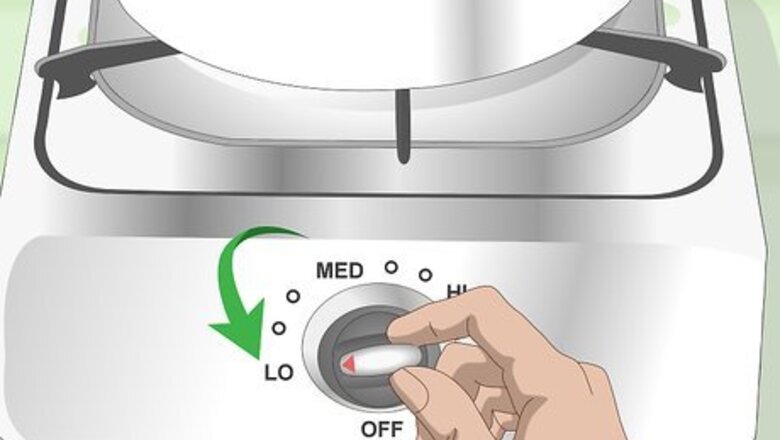
views
Using Your Gas Stove Correctly
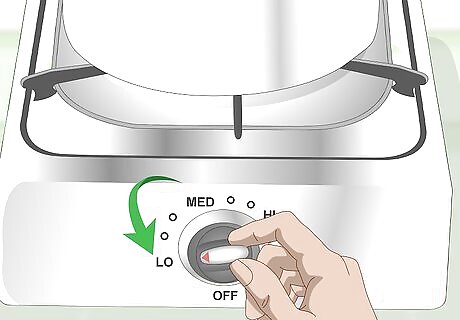
Reduce the heat as much as possible. Some cooks have a bad habit of turning the burner up all the way anytime they need to heat something. Instead, try to only use as much heat as necessary to reheat or cook your food through. Anything beyond the minimal required temperature will be a waste. Water, for example, boils at 212 °F (100 °C). Once it’s boiling, leaving the cooktop on full blast won’t make it any hotter—it will only use up more gas. When cooking from a recipe, always follow the instructions to a T. Most recipes specify what level of heat to use (“low,” “medium,” “medium-high,” “high,” etc.).
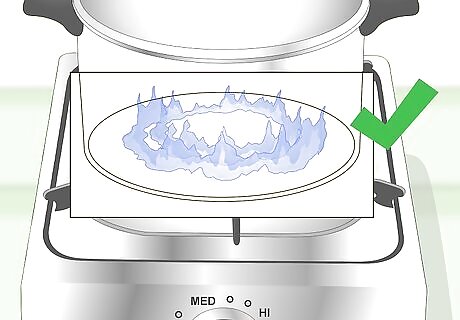
Make sure the pot or pan is covering the flames completely. If you can see the flames licking the sides of the pan, it means the stove is turned up too high. Lower the temperature until the flames are confined to the bottom surface of the pan. Otherwise, their heat will escape into the surrounding environment. For best results, only use flat-bottomed cookware. With these pieces, the entire heating surface will remain in contact with the flames at all times. If your stove has multiple burners of different sizes, choose a burner that’s smaller than the pot or pan you’re using to ensure that it’s not putting off excess heat.

Keep your stove’s burners clean to ensure that they’re working properly. To clean your burners, first make sure they’re off and cool to the touch. Then, remove the protective grates and wipe away any lingering debris with a damp paper towel. Finally, scrub the area around the burners with soapy water until they’re completely free of residue. The flames emitted by your gas stove should burn a bright blue color. Yellow or orange flames could be a sign of incomplete combustion, which means that the gas in the lines isn’t being used to its full potential. If cleaning the burners doesn’t solve the problem, call a repairman to come take a look at it and replace it if necessary. A weak burner isn’t just irritating, it’s actually dangerous—incomplete combustion can result in the release of hazardous carbon monoxide gas.

Check for potential leaks. Pay close attention to strange smells or faint hissing sounds originating from around your stove. These symptoms could indicate a leak. If your stove has a faulty gas line, you’ll be losing gas even when you’re not cooking. The simplest way to test for a leak yourself is to pull out the stove enough to access to the gas line and brush the fittings with soapy water using a cotton swab. If one of them begins to bubble, you’ve got a leak on your hands. Leaks should be dealt with immediately, as they can pose a serious safety risk.
Making the Most of Your Cookware
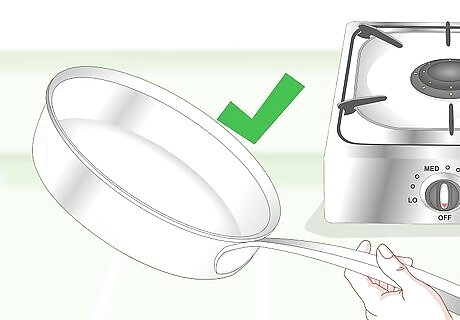
Invest in high-quality cookware. Materials like copper, stainless steel, and are extremely conductive, which allows them to heat up faster and distribute heat more evenly. Similarly, cast iron and ceramic do a great job of retaining heat longer, meaning you won’t have to leave the stove on to simmer sauces or keep finished dishes warm. Stainless steel and ceramic cookware tends to be slightly more expensive, but when you consider how much money you stand to save every month, it will practically pay for itself.
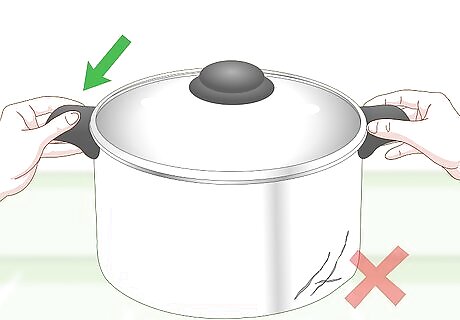
Keep your cookware in good condition. Handle your pots and pans carefully to prevent scratches, dents, and dings. Smooth surfaces absorb heat with ease, while rough ones have a much more difficult time, and can even reject it. Another danger of working with battered cookware is that it’s possible for chemical seasoning agents to begin flaking off over time, which could introduce harmful chemicals to your food. Only use plastic utensils in nonstick pans, and be sure to clean them using soft sponges rather than steel wool or other abrasive materials.

Grab a pressure cooker to boil, braise, or steam food faster. Pressure cookers take advantage of superior conductivity and high internal temperatures to cook food in less time. That means they’ll save you money while also freeing up precious minutes of your day that you can use to take care of other responsibilities. Pressure cookers use 50-75% less energy on average than conventional cookware in the same cooking time. You can purchase a good pressure cooker for as little as $30-50 at most home goods stores.

Use thermal cooking bags to keep cooked food warm. Thermal bags, also known as “oven bags,” work by insulating freshly-heated food, thereby slowing down the cooling process. Once the food is ready to come off the stove, simply remove it from the burner and seal it inside the thermal bag. It will stay piping hot while you see to the rest of the meal. Cooking bag are available in various sizes and designs for use with different food items and cooking methods. Cooking bags are not intended to be used inside cookware directly on the stovetop.
Cooking More Efficiently
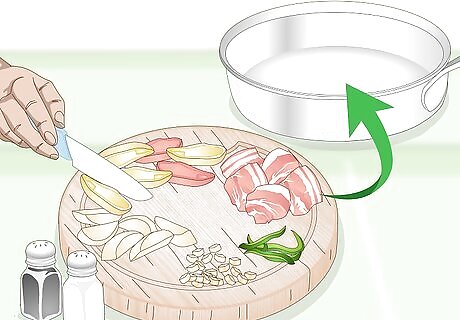
Have all your ingredients ready to go prior to cooking. Make sure everything is chopped, peeled, thawed, seasoned, marinated and basted before you ever turn on the stove. That way, you won’t be burning gas while you finish prepping the various components of your meal. Boiling water can be an especially big drain. Many people often leave their water boiling for far too long before they actually add anything to it. EXPERT TIP Kathryn Kellogg Kathryn Kellogg Sustainability Specialist Kathryn Kellogg is the founder of goingzerowaste.com, a lifestyle website dedicated to breaking eco-friendly living down into a simple step-by-step process with lots of positivity and love. She's the author of 101 Ways to Go Zero Waste and spokesperson for plastic-free living for National Geographic. Kathryn Kellogg Kathryn Kellogg Sustainability Specialist Expert Trick: If you want to save gas, look for ways to cook different foods together. For instance, if you're boiling water to make pasta, you could place a colander on top of the pot to steam vegetables while the water boils.
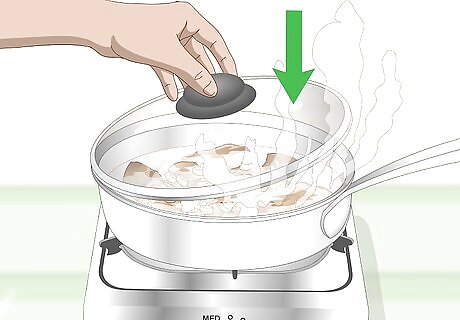
Cover your pots and pans whenever possible. Heat escapes much more rapidly from open cookware. Trapping that heat will cut down dramatically on your cooking time and also prevent the kitchen from becoming unbearably hot while you’re getting dinner together. Keep in mind that steam is heat, too. If your food has to let just to reach the right consistency, you probably used too much water in the first place. Covering dishes as they simmer also makes them less likely to turn out too dry.
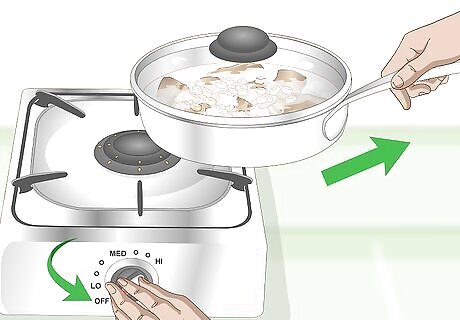
Avoid overcooking your food. As soon as a dish or ingredient is finished cooking, turn off the burner and set it aside to cool. This logic behind this is simple—the longer the food is on the stove, the more gas you’ll use up. Set a timer and keep an eye on your food as it cooks so you can kill the heat as soon as it’s done. Transferring your cooked food to a cooking bag or simply placing a lid on top are more practical alternatives to using the stove to keep it warm.
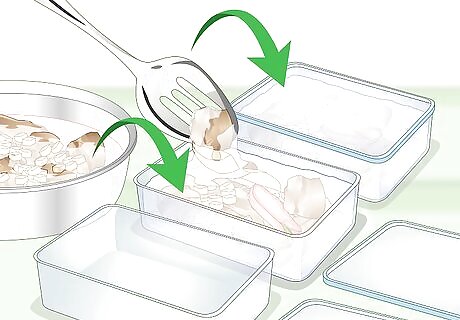
Prepare and store food items in bulk. If your utility bill has gotten out of hand due to the amount of cooking you do, consider hopping on the meal-prep bandwagon. It’s as easy as making enough for several meals at one time and refrigerating or freezing the rest until you need it. Not only will cooking in bulk help you cut costs, it will also save you time in the future by leaving you with a ready supply of reheatable food.


















Comments
0 comment